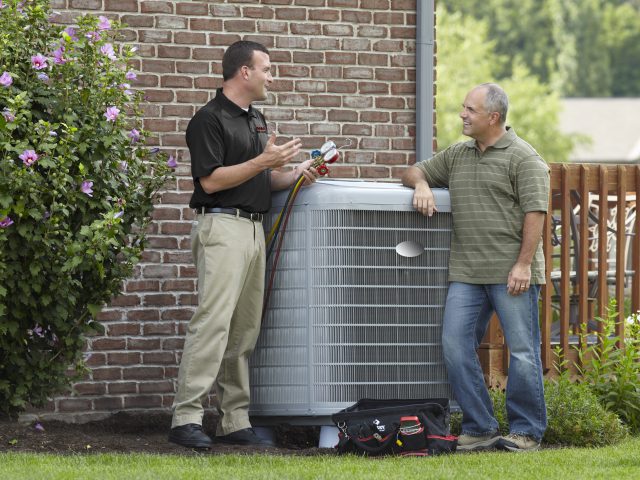
1) Utilize a Thermal Detector to Look For Leakages
A lot of houses lose 15% great air because of leaks that typically can not be seen with the nude eye. Thermal detectors are available on Amazon.com for around $39 so you can recover that price in about 2 months.
You will find absolutely discover 5-10 degree temperature level swivel the seams of your windows (presuming you haven’t changed your home windows with power efficient home windows). If you are low on cash, a hefty glazing or thick grain of caulk around all seams will assist, yet you will still lose the cool air through the old pane glass or affordable dual pane home windows.
A thermal detector will certainly additionally uncover small openings, nooks, and also crannies where awesome air is escaping. Often doors are a wrongdoer and also might use brand-new or extra weather-stripping. Also, electric outlets that lie on exterior walls need to be checked out.
2) Windows Make a Significant Distinction!
Naturally, after using your thermal detector you will certainly see that more times than not, your old windows are where you are shedding most of your trendy air. The noticeable solution is changing your ineffective windows with Low-E, argon-loaded, vinyl replacement windows. Windows like these generally run around $180 so you should most likely transform out 3-4 each time.
If you can’t afford brand-new home windows, check out indoor storm windows. They are unpleasant but produce a thermal barrier between your old window as well as the new storm window that is installed flush with your indoor wall. Warm is an insulator so this is a sensible option particularly if the double-glaze window is UV-coated.
If you polished and also caulked your old windows however the pollution originating from your slim pane( s) is still allowing warm in, attempt a UV film. Static cling or comparable to a sticker, UV film reduces the increase of warmth by 30%.
Ridge Vent
* Copyright Metalera
Resource: Metalera
3) Ridge Vent vs. Attic Fan
Ridge vents have actually gained popularity over the last 10 years as well as rightfully so. A ridge air vent is a long metal vent that runs the size of the roofing system at its optimal. If there are several heights in your roofing system there will certainly be several ridge vents. The reason ridge vents make sense is due to the fact that it gets rid of the warmth from your attic room evenly, effectively, and also without power.
The disadvantage of ridge vents is that they do not get rid of sufficient warmth. To claim a ridge air vent doesn’t move the warmth swiftly sufficient to make a large impact is since the vents are just also little. Depending on the cut, vents are only 2″ -4″ in size. If you have an extremely small residence, ridge vets will do fine but also for houses over 1,350 sq/ft, ridge vents are incapable of displacing the heat produced by the sunlight on your roof covering.
The far better option to ridge vents is including several, powered attic fans. Powered attic room followers relocate a ton of air really promptly and make use of very little power. Location 3 to 4 attic fans near the top of your roofing and area them so they are equidistant from each other. They are run by thermostats so when your attic reaches say 110 levels, they turn on as well as remove the warm until the temperature level is below the threshold.

A contractor would perform both of these setups and also the difference in cost would certainly be minimal. If you found this article useful, you may also visit their page to read more about hvac service.
4) You Need More Attic Insulation!
Matching ridge vents/attic fans with even more attic room insulation is never a bad idea. Specification residences and also older homes do not have the proper insulation in the attic. You can rent a blower at Lowe’s or Home Depot, get 5-10 bundles of insulation, and eventually drastically cool down your residence.
Insulation should be concentrated near the joint where the attic floor satisfies the roofing as well as additionally around cooling ductwork. Ideally, you should not see any kind of flooring joists (presuming they aren’t covered in plywood) since insulation hides them.
5) Take Pleasure In The Wind of a Whole House Follower
I initially experienced a whole house follower, often wrongly referred to as an attic room fan, in my granddaddy and grandmother’s house. They opened two windows and when the follower was activated, the entire residence follower would certainly suck a lot of air from outdoors that you were cooled down by a 20-30 miles per hour wind.




